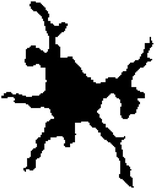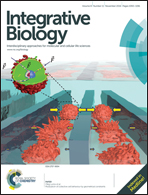Measuring systematic changes in invasive cancer cell shape using Zernike moments†
Abstract
We study the shape characteristics of osteosarcoma cancer cell lines on surfaces of differing hydrophobicity using Zernike moments to represent cell shape. We compare the shape characteristics of four invasive cell lines with a corresponding less-invasive parental line on three substrates. Cell shapes of each pair of cell lines are quite close and display overlapping characteristics. To quantitatively study shape changes in high-dimensional parameter space we project down to principal component space and define a vector that summarizes average shape differences. Using this vector we find that three of the four pairs of cell lines show similar changes in shape, while the fourth pair shows a very different pattern of changes. We find that shape differences are sufficient to enable a neural network to classify cells accurately as belonging to the highly invasive or the less invasive phenotype. The patterns of shape changes were also reproducible for repetitions of the experiment. We also find that shape changes on different substrates show similarities between the eight cells studied, but the differences were typically not enough to permit classification. Our paper strongly suggests that shape may provide a means to read out the phenotypic state of some cell types, and shape analysis can be usefully performed using a Zernike moment representation.


 Please wait while we load your content...
Please wait while we load your content...